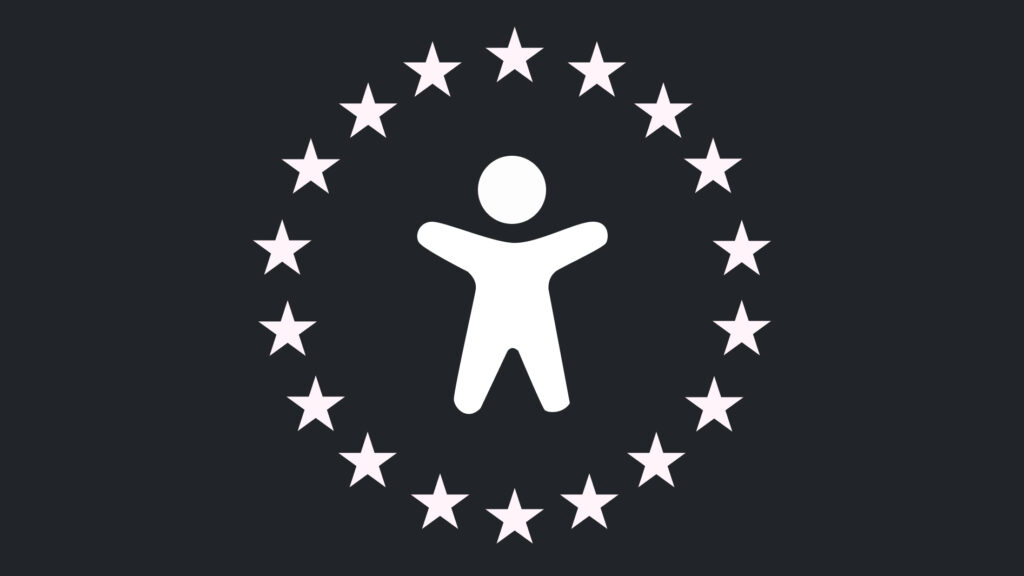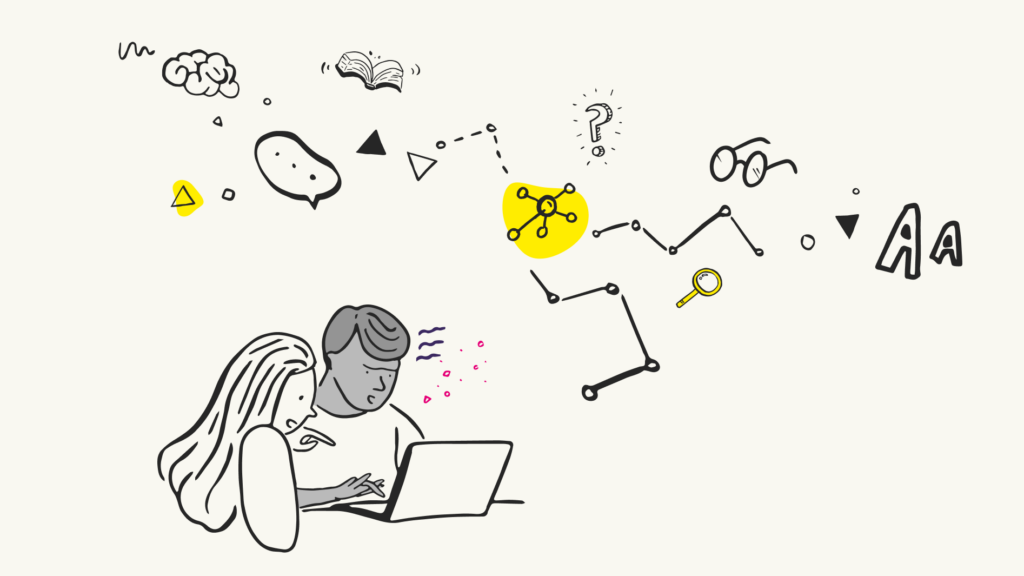Web accessibility is not a new concept. The Web Accessibility Initiative was launched back in 1997, and yet 15 years later it is still a widely ignored and neglected aspect of web development. There are many deep-rooted misconceptions about accessibility which prevent people from making a conscious effort to incorporate it into their websites. Let’s take a closer look at the top 7 web accessibility myths:
1. Accessible websites are ugly and boring
Some of them certainly are. But so are millions of totally inaccessible websites. The point is, accessibility has nothing to do with how visually attractive or interesting a website is. This misconception comes from the early days of the Internet, when technology did in fact restrict the developers’ choices in terms of accessibility and design. Text-only websites, stripped of any kind of elements increasing the visual appeal, were considered the only acceptable solution. The times, however, have changed. It is absolutely possible nowadays to create a beautiful, media-rich, interactive, engaging AND accessible website. People who claim otherwise usually misinterpret the accessibility requirements and in effect see them as more restrictive than they actually are. WCAG guidelines don’t forbid anyone to use images, videos or JavaScript on their website. The only thing they say is, if you do, make sure that the content of the website is still accessible if the users are not able to, or choose not to, use them. That means providing captions and transcripts for videos, alternative text descriptions for images, mechanisms to control slideshows or using accessible JavaScript plugins, etc.
2. Web accessibility is expensive, time-consuming & hard to implement
It stems from some strange idea that the process of creating an accessible website is very complicated and much different from creating one that is not. But there is no AccessibleHTML or AccessibleCSS. The same languages and technologies are used, but perhaps more thoughtfully, with more understanding, attention to detail, and in accordance with best practices. Creating an accessible website is also not a particularly expensive or time-consuming process, especially if you do things the right way from the beginning. It has to be said that rebuilding an inaccessible site for accessibility can in some cases be difficult, time-consuming and quite expensive (all the more reasons to incorporate accessibility into your website from the beginning), but it is still worth doing. Price paid in money and effort can be seen as a future investment that will in the long run pay off (see point 7 for the many benefits of having an accessible website). Also, as accessibility is in some cases required by law, ignoring it can prove to be very expensive and troublesome. So it’s probably not a question of whether you can afford to build an accessible site, but rather if you can afford not to.
3. Accessible sites only benefit small percentages of people
This seems to be the main argument for business owners who don’t want to make an effort toward making their websites accessible. They often say that people with disabilities don’t use their sites. Well, how can they if the website is inaccessible to them? It’s like saying there’s no point in installing a lift in a building with a restaurant on the top floor, because people who use wheelchairs don’t dine there. It’s a case of confusing cause and effect.
Then there are other people saying that there’s no point in making an effort which will benefit so few people. Let’s then try to work out the number of these ‘few people’. It is estimated that around 10% of the population worldwide has a disability that affects Internet use. I personally wouldn’t describe 650 million people as ‘few’. But even this number is not correct. Most of us experience some sort of temporary disability at some point of our lives. Browsing through sites with flickering images and badly contrasted colours may prove unbearable for someone with migraine, and a broken wrist can mean that mouse navigation is no longer an option. Also, whether we like it or not, we’re all getting older, and with age our hearing, sight and dexterity diminish, changing our ability to use the Internet. So now we know that accessibility benefits people with some sort of health problems, permanent or temporary.
But even that is not the whole truth. For example, WCAG guidelines mention building websites with clear layout, consistent navigation and meaningful link names, to make them accessible to people with cognitive disabilities. But aren’t all these features useful to everyone, especially when visiting a content-heavy site for the first time? Providing alternative text descriptions for images can benefit not only blind users, but also people who use low-bandwidth connections and turn off the images in order to increase the speed of browsing. Creating text captions for video and audio files, done mainly with deaf people in mind, can be very useful for people who don’t have speakers or would like to access the content without disturbing the people around them. And building keyboard accessible websites will benefit not only disabled users, but people using the Internet on their mobiles as well.
Considering all the above, I think it is safe to say that making sites accessible benefits us all, the entire web community, including the healthy users and the people without real medical disabilities.
4. Web accessibility is optional
Well, not really. Accessibility of a website is actually required by law. The Equality Act 2010, which came into force in October 2010, replacing the Disability Discrimination Act (DDA) in England, Scotland and Wales, makes it illegal to discriminate against people with disabilities. The Act applies to anyone providing a service; public, private and voluntary sectors. The Code of Practice: Rights of Access – Goods, Facilities, Services and Premises document published by the government’s Equality and Human Rights Commission to accompany the Act does in fact refer explicitly to websites as one of the “services to the public” which should be considered covered by the Act. In effect, if someone with a disability can’t access the information on a website, then it could be seen as discrimination, so for example it may be seen as unlawful to have links that are not accessible to a screen reader or use colour contrast that make the website inaccessible to a partially sighted service user.
To date, very few companies have faced such legal action in the UK. In two cases, actions were initiated by the Royal National Institute for the Blind, and both settled without being heard by a court. There were some cases abroad as well; in 2000 in Australia a blind man successfully sued the Sydney Olympics organising committee over their inaccessible website, and in the USA target.com and, recently, netflix.com were also successfully sued over the accessibility of their websites.
5. Web accessibility is the sole responsibility of developers
It is widely believed that the only people responsible for making the web accessible are web developers. But is it fair on them? Web developers work in a complex environment of interconnected technologies, with components that have an impact on overall accessibility. These include web browsers, media players, assistive technologies (like screen readers or alternative keyboard), authoring tools used to create websites, accessibility evaluation tools, HTML and CSS validators, etc. What sense would it make for the web developers to try incorporating accessibility into websites they’re building, if other components are unable to implement it or support it? If user agents and authoring tools don’t support certain features correctly and consistently, it’s no wonder web developers sometimes don’t see a point of making an effort. In turn, if user agents provide some functions to help develop compliant websites, web developers should design the websites making use of them. For example, since the browsers support text resizing, why would you use absolute rather than relative size units for text or sections containing text?
But responsibility for web accessibility also rests on people outside ‘the industry’; authorities creating laws and codes of practice, and website owners – various businesses and organizations. We already have the law regulations in place – The Equality Act 2010 came into force in October 2010 and The Code of Practice: Rights of Access – Goods, Facilities, Services and Premises in April 2011. Now it’s time for leaders of organizations to realize the importance of accessibility and ensure it’s incorporated on their websites.
6. Automated evaluation tools are enough
Automated evaluation tools are very helpful, as they can reduce the time and effort necessary for accessibility testing by identifying some potential issues. However, they can’t replace manual testing, because many of the WCAG checkpoints are not objective enough to be tested automatically and require human judgment. An automated tool can check if an image has an alternative text description, but is not able to judge if the description is accurate and meaningful.
7. Making websites accessible doesn’t have any additional benefits
Many people treat accessibility as a necessary evil; something that has to be done for the sake of it, but that is not really rewarding. Maybe the additional benefits of accessibility listed below will help to change that:
Search engine optimisation
Unlike accessibility, SEO is something companies don’t usually hesitate to spend money on. And yet many accessibility guidelines are the same as SEO techniques, for example valid HTML, clear link names, using text rather than images of text, descriptive ‘title’ tags, providing text equivalents for multimedia, creating a site map, etc. This means that incorporating accessibility will at the same time help to improve websites’ search engines ranking;
Increased website use
As accessible websites are easier to find, access and use, they maximise the number of possible visitors. And this in turn can boost company’s profits – e-commerce websites can increase sales and non-profit organisations get more funding;
Cost savings
Accessibility can help to decrease costs, such as maintenance costs, server costs, cost of upgrading to new technologies, cost of customer support services (as more people are able to complete many of the tasks online), etc.;
Increased usability
In general, accessibility increases usability of a website, and in effect improves quality of user experience. Some accessibility guidelines are similar to the usability ones, such as promoting clear and consistent design and navigation, dividing blocks of information into logical sections, good colour contrast, etc. Increased usability makes users more likely to return to the website, use it more thoroughly and recommend it to others, which again can result in increased profit;
Reduced site development and maintenance time
Although incorporating accessibility can increase site development time initially, in long term it reduces time spent on site improvements and maintenance. Using style sheets and coding to standards reduces effort needed to change presentation across a site.
Improved interoperability
Accessible websites enable content to be presented and interacted with on many different configurations, which increases interoperability and device independence;
Reduced server load
Many accessibility techniques, such as using external style sheets rather than in-line styling or text rather than text images, reduce the server load and increase the download speed;
Reputation
Last but not least, a company’s efforts towards making their website accessible can have a positive impact on company’s reputation, as it creates an image of an ethical and socially responsible organisation. So that’s the top 7 web accessibility myths. If you dozed off half way through reading them, here’s the summary:
- Accessible websites are only ugly and boring if you really want them to be;
- Creating them doesn’t take years, cost a fortune and require an army of geniuses;
- They benefit few people. Few billions in fact;
- Web accessibility is totally optional, if you don’t mind being sued and taken to court;
- The Web would be a better place, if we all stopped pointing fingers and took the responsibility;
- Until artificial intelligence reaches the level of human intelligence, automated accessibility testing is not enough;
- Web accessibility comes with many freebies.
Now, why would you say no to that?
Start building accessibility into your projects at the beginning to save time and money, don’t just leave it hanging on the backlog letting it gather up dust. Drill it in.
If you would like Nomensa to help you with your accessibility challenges or to provide you with an accessibility evaluation of your website/mobile app, please don’t hesitate to get in touch.
Take a full look at the digital accessibility services that we offer.
We drive commercial value for our clients by creating experiences that engage and delight the people they touch.
Email us:
hello@nomensa.com
Call us:
+44 (0) 117 929 7333




